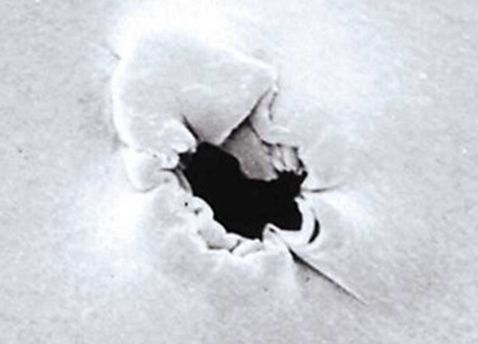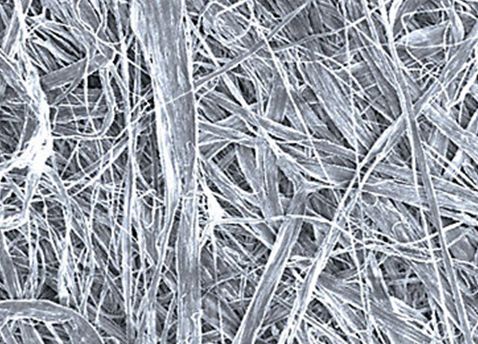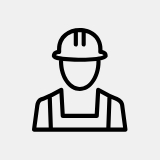To maintain the breathability of their products, manufacturers of perforated house wrap poke thousands of tiny holes through their materials. These "microperforations" allow some vapor movement, but they also invite the risk of air penetration and bulk water damage in exterior walls.
The unique, nonwoven structure of Tyvek® HomeWrap® keeps bulk water at bay while letting interior water vapor pass through easily.
Comparing weather barriers
A closer look.
Micrograph views of perforated house wrap and Tyvek® HomeWrap® reveal stark differences. The ragged "microperforations" in perforated house wrap compromise its ability to resist air and water penetration, which can lead to potential mold, water damage and higher energy costs.

Perforated house wrap 350X magnification

Tyvek® HomeWrap® 350X magnification
See for yourself
It doesn't hold water.
Mark LaLiberte, building science expert and founder of Construction Instruction, demonstrates the performance differences between perforated wraps and DuPont™ Tyvek® HomeWrap®.
Go with the proven solution.
DuPont™ Tyvek® HomeWrap® delivers superior air and water holdout and breathability, far exceeding code requirements. For more than 30 years, Tyvek® has set the performance standard and still does.
Insist on DuPont™ Tyvek® HomeWrap® for your next project.


